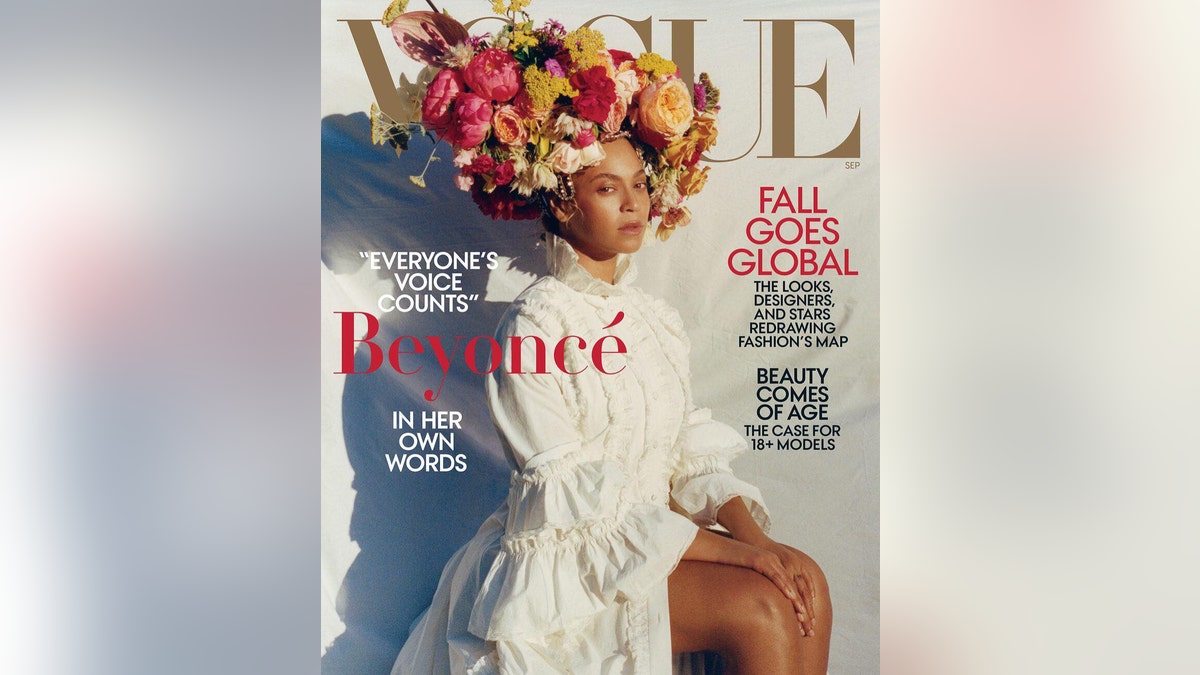
The September issues of style mags including Vogue, Harper's Bazaar and W "don't mean what they once did," a former publisher believes. (Vogue)
In years gone by, the September issue was the Super Bowl of fashion magazines.
Fat with ads and glossy shoots cherry-picking the best looks of fall — the most important season in the fashion calendar — the annual issue heralded the pinnacle of a magazine’s influence and success.
Days before the issue hit newsstands, usually in early August, executives from Vogue, InStyle, Harper’s Bazaar, Elle, Glamour and W would brag about the thickness of their telephone book-sized glossies. They’d boast of the “thud” the issues made when dropped on a coffee table. The louder the thud, the more powerful the magazine.
Now that thud is more of a whimper.
PICS: TATTOO ARTISTS INKS WHATEVER HE WANTS ON CLIENTS
“The September issue means nothing anymore,” said Sam Shahid, founder of branding, advertising and design agency Shahid & Company. “You used to hold that magazine in your hand. It takes you to a place — that’s what a magazine used to do. Now they are all doing the same thing. There’s no imagination there. It’s just pure product, it’s pleasing the advertiser.”
Shahid says a lack of funds at publishers, due to a decline in print circulation and ad revenue in the digital age, has led to a crazy scramble to attract any kind of buzz or revenue.
“There’s a desperation right now with print,” he added. “The power magazines used to have is no longer there. Celebrities are controlling fashion.”
Take Vogue, for example. Helmed by iconic editrix Anna Wintour since 1988, the fashion bible once set the agenda for the industry, with designers and celebrities clamoring to be featured in its pages. A single mention could make or break a designer’s business, but now a celebrity such as Kim Kardashian (58 million Twitter followers; 115 million Instagram followers) has a lot more reach and, as a result, more clout than any single magazine. (Vogue’s 13.5 million Twitter followers and 19.5 million Instagram followers are comparatively measly.)
TEXAS WOMAN'S MUGSHOT GOES VIRAL, PEOPLE BEGIN ASKING FOR MAKEUP TIPS
Up until recently, an A-lister considered it an honor to be chosen for Vogue’s cover. But for its all-important September issue this year, Vogue seemed to bend over backwards to attract A-lister Beyoncé for its cover. The pop star collaborated on the choice of photographer and appeared on the cover in clothes she chose herself. She declined to be interviewed but instead “told her own story” in a written piece.
“Who is better to write about Beyoncé than Beyoncé?” Wintour told the Business of Fashion blog last week.
But Wintour’s comments gloss over a more important point. If the entire appeal of Vogue’s September issue stems from Beyoncé, does Vogue have any of its own authority left?
With rumors swirling that this September issue may be Wintour’s last (claims she has denied), insiders told me it’s no surprise that the famously autocratic editor has ceded creative control to someone else. “I think we all know that she is on her way out, and that she needs to start giving the power elsewhere,” said a former publisher who has worked on multiple fashion titles including InStyle and Glamour. “And that elsewhere is not to an editor in the ivory tower. Consumers will appreciate that the power is being given to someone who they connect with more.”
FOLLOW US ON FACEBOOK FOR MORE LIFESTYLE NEWS
“Beyoncé is a crafty move,” added a former Condé Nast publisher who has worked on several of its magazines including Vogue. But September issues “don’t mean what they once did. There was a time when they could mobilize women and get them into the stores. They could make a moment happen. They could make a color happen. Print is still important, but it doesn’t drive sales the way it used to.”
For more, continue reading the original article at The New York Post.
